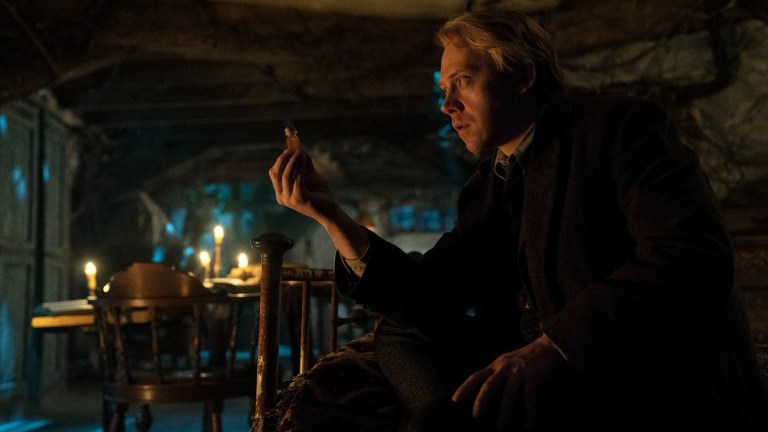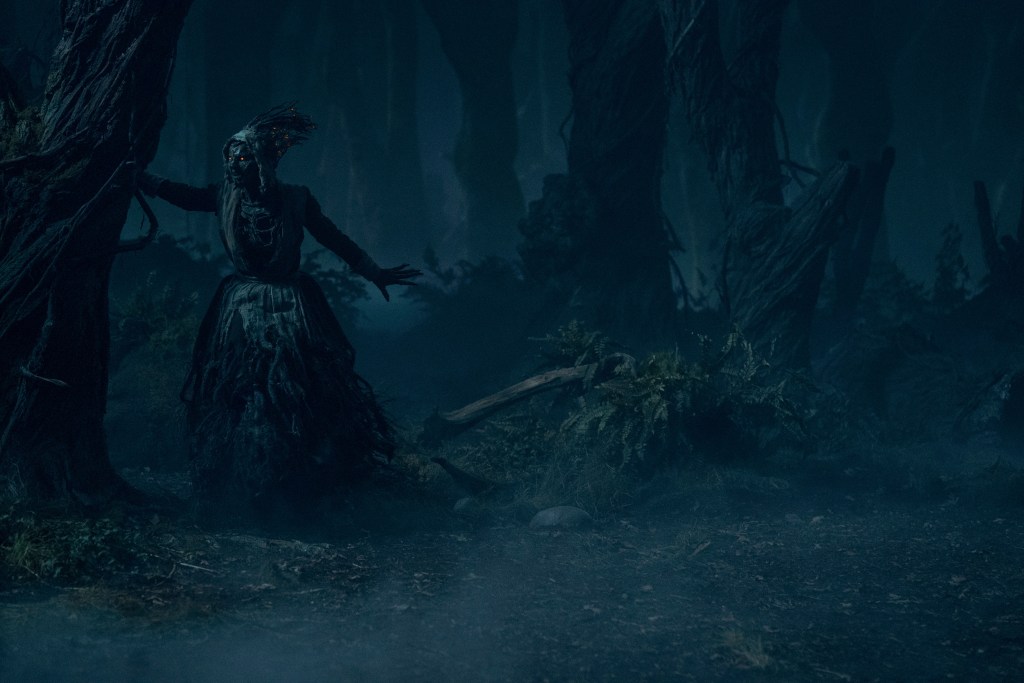How Dreams in the Witch House Adapts The Sounds of Lovecraft
Guillermo del Toro's Cabinet of Curiosities: "Dreams in the Witch House" makes an H.P. Lovecraft story more human.

This article contains spoilers for Guillermo del Toro’s Cabinet of Curiosities: “Dreams in the Witch House.”
By its very definition, the work of H.P. Lovecraft is often challenging to adapt properly. The massively influential early 20th century sci-fi and horror author reveled in depicting the indescribable. The terrors of Lovecraft’s “Cthulhu Mythos” are so profound that his characters are often incapable of even perceiving them without going mad. How, exactly, is any visual medium supposed to go about crafting the unseeable? According to “Dreams in the Witch House” director Catherine Hardwicke, you opt to ensnare one of the other human senses instead.
“It was almost a story written for a sound designer, in my mind,” Hardwicke says of her adaptation of the Lovecraft story of the same name. “(The story) just talks about the creaks and the sounds moving all through the witch house. I got the sound designers to really go step by step in there.”
“Dreams in the Witch House” is the sixth installment in Netflix horror anthology Guillermo del Toro’s Cabinet of Curiosities. Directed by Hardwicke (Twilight) and written by Mika Watkins (Black Mirror), the short film was released alongside “Pickman’s Model,” another Lovecraft adaptation as part of the series’ “Night Three: Lovecraft.” “Dreams” is slightly atypical for a Lovecraft joint in that it’s A. not regarded as very good, and B. actually adaptable, as evidenced by its previous retelling in Showtime’s Masters of Horror series. Another part of it is that Cabinet’s tellers of this story made extra efforts to properly transition it to the screen.
“(The script) deviated a lot from the Lovecraft story,” Hardwicke says. “Mika came up with all these ideas to enrich it and introduce more human dynamics. We added more layers to it and enriched the female characters.”
While in Lovecraft’s original tale, the occupant of the titular Witch House is a student of mathematics and folklore seeking out the mysteries of the occult for academic purposes, in this adaptation Walter Gilman (Rupert Grint) seeks out the Witch House for intensely personal purposes. After watching his twin sister die and her spirit being dragged out into the Forest of Lost Souls, he spends all of his adult life consumed with bringing her back. Both Walter’s twin connection and the Forest of Lost Souls itself are inventions for the show.
Even while making Lovecraft more accessible for cameras, there are certain elements from this story that warrant inclusion. Chief among them, of course, is the monstrous witch at the center of the Witch House: Keziah Mason. Nearly all of Guillermo del Toro’s Cabinet of Curiosities episodes feature a showstopping monster design that the creature connoisseur has become known for. But even in a crowd of abominable competitors, Keziah Mason stands out. Part foliage, part human, and all hate, this undead witch cuts an imposing figure throughout the back half of the tale.

“That was one the best parts of this whole thing is to collaborate with Guillermo and his team on the witch,” Hardwicke says. “(del Toro) has this cool concept artist (Guy Davis) he’s worked with for years. He’s got the creature designers who makes all the prosthetics and then he’s got (Luis Sequeira) the costume designer who made all the roots and everything. Between Guillermo and all of those three teams it was just pure fun. Just building that design up and putting the prosthetics on (actress Like Johnston) – when you see it all come together is just so creepy.”
And then there’s the rat of it all. Keziah Mason being a witch means that she gets to enjoy the company of a witch’s familiar – a spooky little animal buddy to assist her in dark magic. In Lovecraft’s short story, Keziah’s familiar is “a small white-fanged furry thing” that takes the rough appearance of a rat with a human face named Brown Jenkin. In the Cabinet of Curiosities version, the familiar maintains its mostly rat/human features but gets an inverted name of Jenkins Brown.
Six episodes in, rats have become something of a recurring motif for the Cabinet of Curiosities, whose first day featured the rat-a-palooza that was “Graveyard Rats.” Still, Hardwicke is fiercely partisan when it comes to her rodent.
“I was hoping that my rat would be better than all the other rats because my rat has a human face. I mean, do you think it’s true? Is my rat cooler?” Hardwicke asks. Upon learning of the existence of the German shepherd-sized “Queen Rat” in “Graveyard Rats,” she demands to know “Okay. But is that rat funny or not funny?”
That rat is decidedly not funny but Jenkins Brown certainly is. Played by DJ Qualls, both in voice and prosthetic-aided appearance, Jenkins Brown adds a deliriously strange element to “Dreams in the Witch House” that can scarcely be believed.
A talking, sarcastic rat who burrows into and then bursts out of the protagonist’s body? The mind can barely process it! Maybe “Dreams in the Witch House” is more Lovecraftian than it first appears…
Six episodes of Guillermo del Toro’s Cabinet of Curiosities are available to stream on Netflix now. The final two will premiere Friday, Oct. 28.
